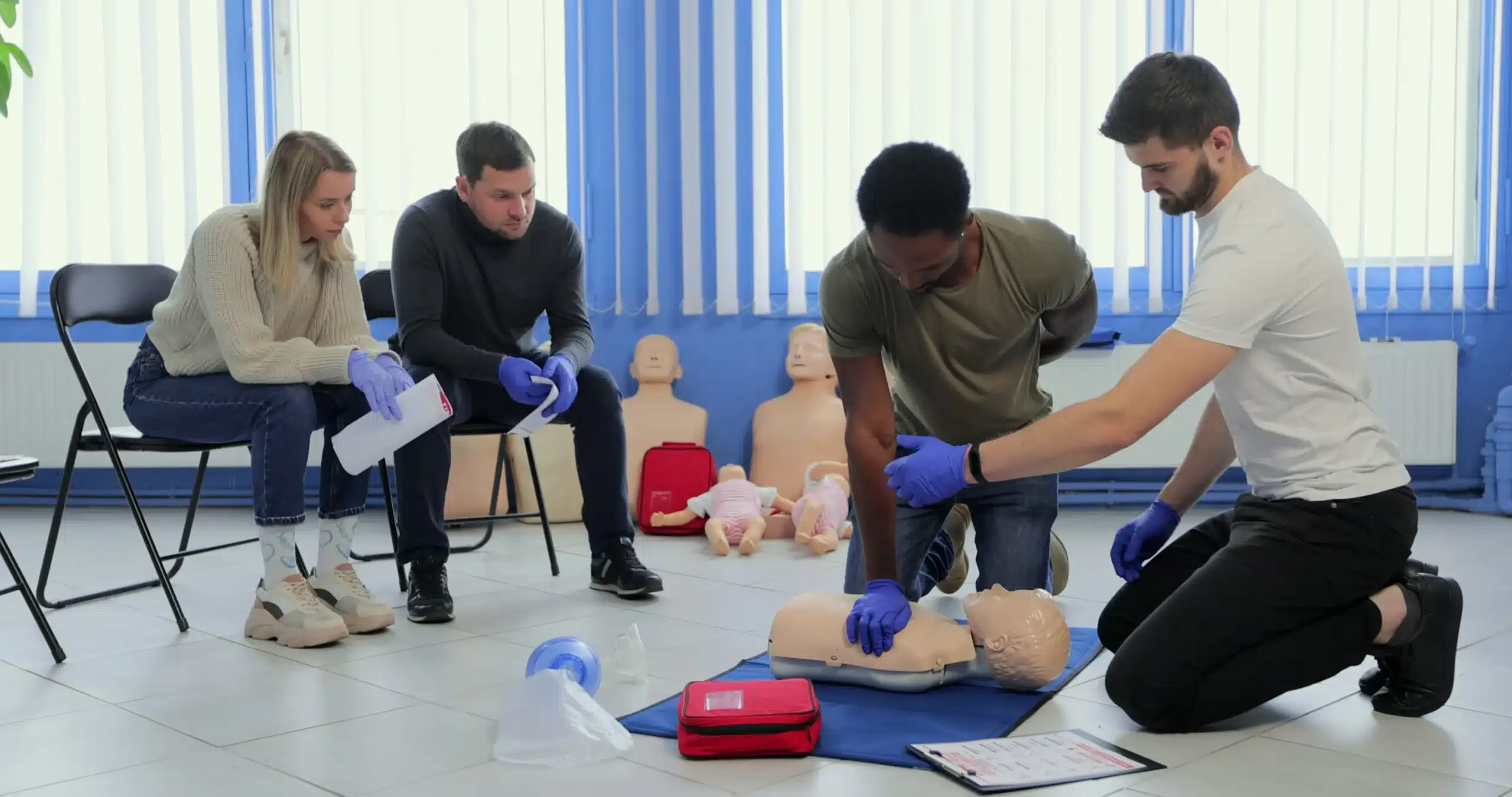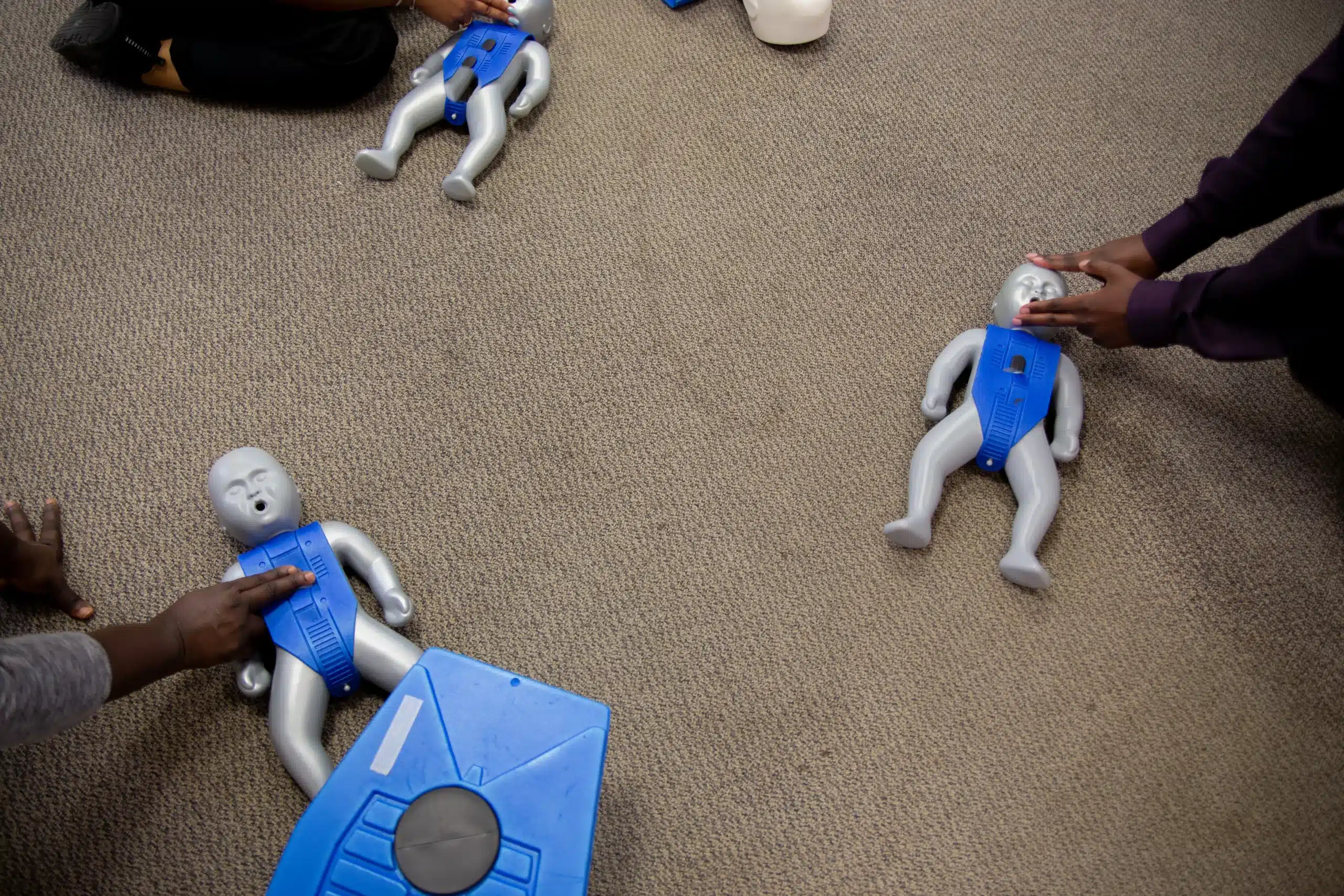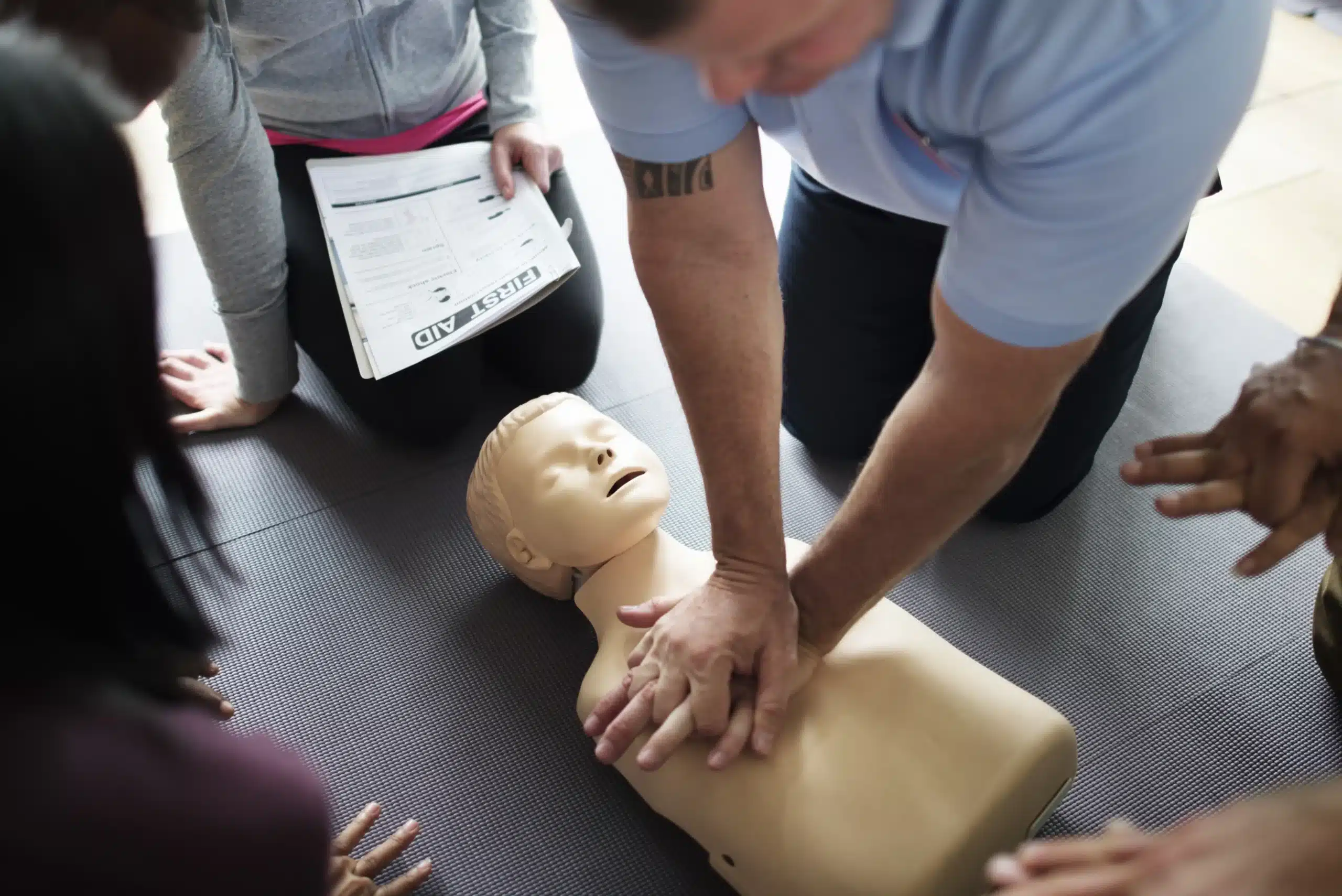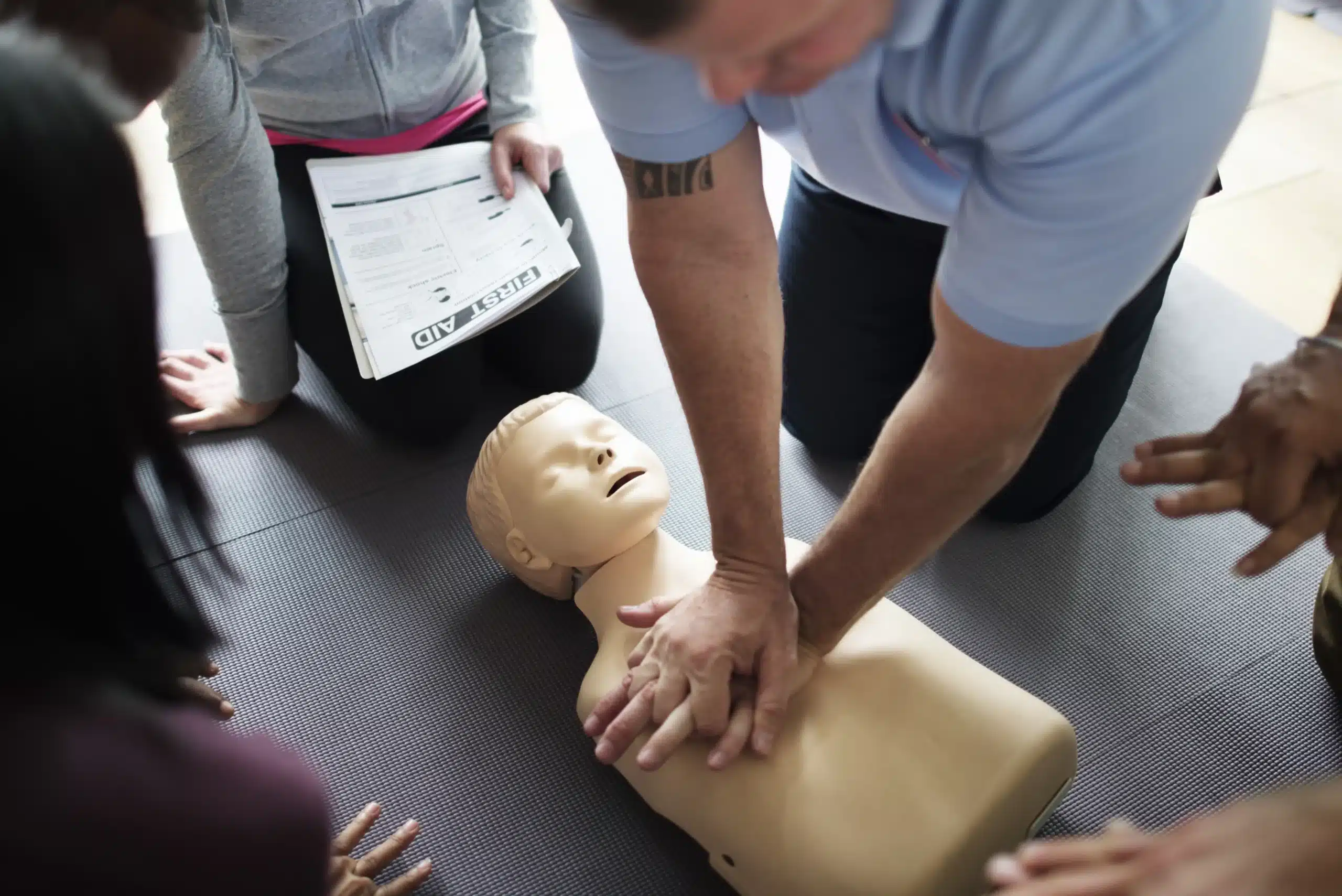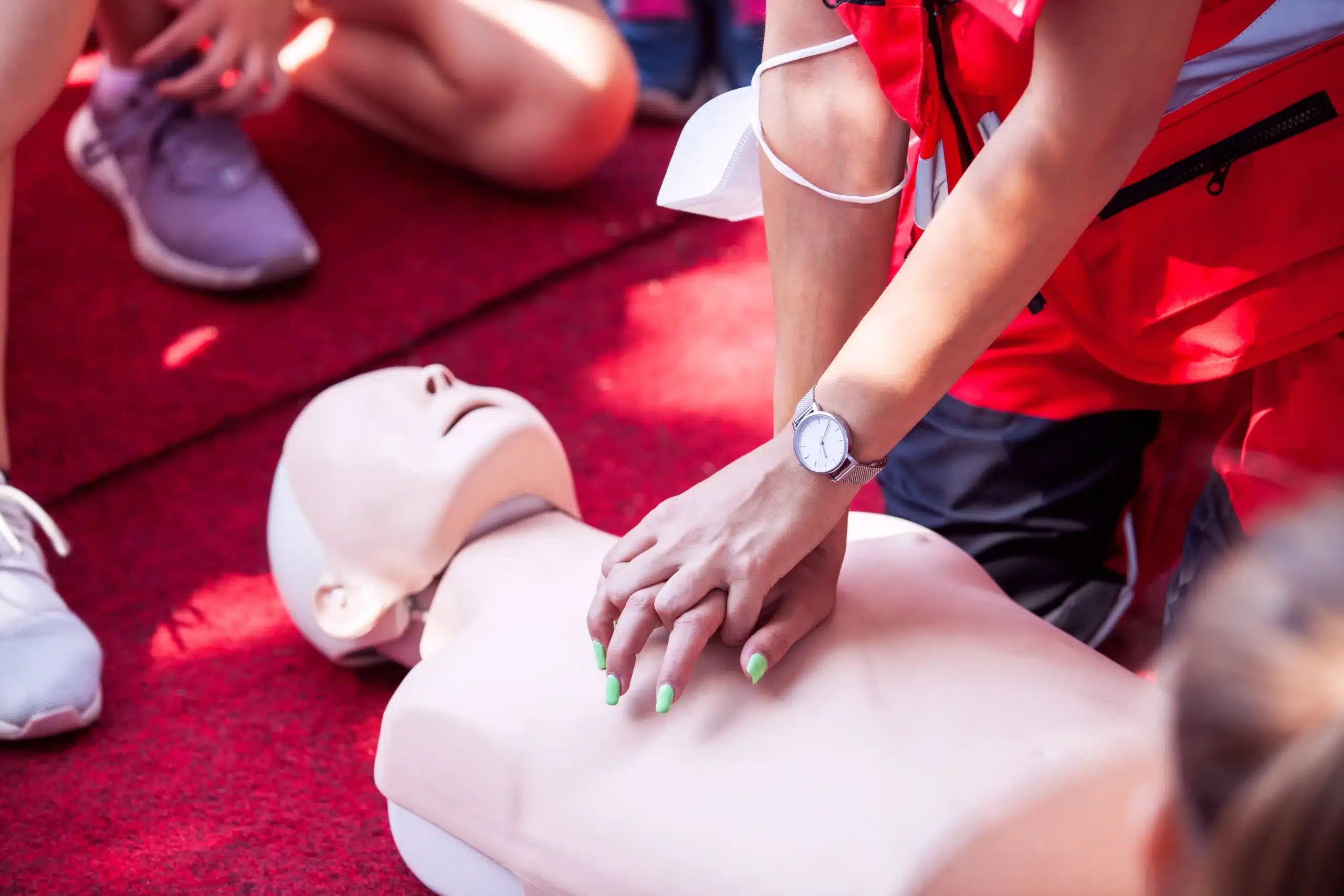Working with children is a rewarding experience, but it also comes with a unique set of responsibilities. As caregivers, educators, or healthcare professionals, we need to be prepared for anything, especially medical emergencies. That’s where Pediatric Advanced Life Support (PALS) training comes in. This specialized certification goes beyond basic first aid and CPR, equipping you with the advanced skills to respond effectively to life-threatening situations in infants and children. If you’re looking for pediatric advanced life support in Redwood City, this guide will break down everything you need to know, from course content and certification requirements to finding the right training program for your needs. We’ll explore the challenges and rewards of PALS certification, helping you make informed decisions about your training journey.
Key Takeaways
- PALS certification equips you with life-saving pediatric emergency skills. Whether you’re a healthcare provider, educator, or caregiver, PALS training gives you the confidence to respond effectively in a crisis.
- Finding the right PALS course requires a little research. Consider your schedule, preferred learning style, and budget when comparing options in Redwood City. Look for flexible options like blended learning.
- Redwood City CPR Classes offers high-quality, affordable PALS training. Their flexible scheduling and low-price guarantee make getting certified convenient and budget-friendly.
What is Pediatric Advanced Life Support (PALS)?
What is PALS and Why is it Important?
Pediatric Advanced Life Support (PALS) training equips healthcare providers with the skills to respond to pediatric emergencies. It focuses on the assessment, recognition, and treatment of life-threatening conditions in children, from shock and respiratory distress to cardiac events. PALS is crucial because of the physiological differences between children and adults. Effective interventions require understanding these differences, and PALS provides the framework for quick action that can improve outcomes. The emphasis on evidence-based practices has led to better survival rates and neurological outcomes for children experiencing cardiac arrest. For professionals caring for young patients, PALS is essential preparation for the challenges of pediatric emergencies. Learn more about PALS and its importance from the American Red Cross.
Who Needs PALS Certification?
PALS certification is often required for nurses working with pediatric patients in hospitals and emergency medical services, but it’s relevant for a broader range of professionals. Anyone who might encounter a pediatric emergency—pediatricians, physician assistants, and other healthcare providers—should consider PALS training. Beyond the medical field, PALS certification can be valuable for teachers, coaches, and childcare providers. PALS equips individuals with the skills to provide life-saving interventions when a child’s life is at risk. Even non-medical personnel who interact with children can benefit from the skills and confidence PALS provides. Learn more about who needs PALS certification. At Redwood City CPR Classes, we offer PALS certification to help you gain these vital skills.
PALS Certification Courses in Redwood City
Finding the right Pediatric Advanced Life Support (PALS) course is crucial for healthcare providers working with children. Redwood City offers several options to fit your needs. Let’s explore some of the leading providers and resources available.
Redwood City CPR Classes
Redwood City CPR Classes offers AHA-certified PALS courses with flexible scheduling, often with daily classes, to accommodate busy professionals. This local approach makes fitting essential training into your schedule easier. Visit their website for specific course dates and times.
American Heart Association
The American Heart Association (AHA) sets the standard for PALS training. Their curriculum equips healthcare providers with the knowledge and skills to respond effectively to pediatric emergencies. AHA certification is widely recognized in the medical field.
Other Local Training Centers
Several other training centers in the area offer PALS certification. Providers like Bay Area CPR and Cascade Training Center offer various schedules and course formats. Online resources like CPR Portal can help you find additional PALS courses in Redwood City and surrounding areas like Palo Alto and Menlo Park. Comparing courses, schedules, and pricing helps you find the best fit.
PALS Course Structure and Format
PALS courses use a blended learning format, combining online learning with in-person skills sessions. This approach offers flexibility and lets students learn essential concepts at their own pace before demonstrating their skills. This blended learning PALS course is designed to fit your schedule and learning style.
Online Learning
The online portion of the PALS course covers key concepts and procedures. This self-directed learning experience allows you to study the material when and where it’s most convenient. The online portion must be completed before attending the in-person skills session. This online component provides a foundation for the practical skills you’ll develop later.
In-Person Skills Sessions
After completing the online modules, students attend an in-person skills session. This session focuses on hands-on practice and allows instructors to evaluate your proficiency in essential PALS techniques. The skills session reinforces the knowledge you gained online and ensures you’re prepared to respond effectively in real-life emergencies. These in-person sessions bridge the gap between theory and practice.
Hands-On Practice
PALS courses emphasize hands-on practice using realistic scenarios and mannequins. This practical training simulates real-world pediatric emergencies, giving you the opportunity to apply your knowledge and develop crucial skills in a safe learning environment. The hands-on approach builds confidence and prepares you to handle the challenges of pediatric emergencies. This hands-on training is invaluable for mastering the techniques you’ll need in a real emergency.
Course Duration and Flexibility
The in-person PALS skills session typically lasts approximately four to five hours. You’ll need a current American Heart Association BLS for Healthcare Provider CPR card to take the course. Redwood City CPR Classes offers flexible scheduling options to accommodate busy professionals and students. Contact us to learn more about course availability and find a schedule that works for you.
PALS Certification Costs & Discounts
Knowing the cost of PALS certification and available discounts is a smart starting point. Let’s break down pricing and ways to save.
Course Pricing
PALS course fees vary based on the training center and course format (online or in-person). Check directly with the provider for the most up-to-date pricing. You can visit our PALS course page for detailed pricing information.
Group Discounts
Training with a group? You might be able to save. Many providers, including Redwood City CPR Classes, offer group discounts. This is a great option for workplaces certifying their staff or a group of friends pursuing certification together.
Low Price Guarantees
We understand that cost is a factor when choosing a certification course. Redwood City CPR Classes offers a low-price guarantee in San Mateo County, ensuring you receive high-quality training at a competitive price. We encourage you to compare our prices.
PALS Certification Prerequisites & Validity
Before you jump into a PALS course, it’s helpful to understand the requirements and how long your certification is valid. This section covers the essentials you need to know.
BLS Proficiency Requirements
A key prerequisite for PALS certification is demonstrating proficiency in pediatric Basic Life Support (BLS). This foundational knowledge ensures you’re prepared to handle basic life-saving techniques before progressing to the advanced skills taught in PALS. Think of it as building a solid base before adding the next level of expertise. Redwood City CPR Classes offers American Heart Association BLS courses to help you meet this requirement.
Certification Duration
Your PALS certification is valid for two years. This timeframe allows you to practice your skills and stay reasonably current with advancements in pediatric emergency care. It also emphasizes the importance of continuous learning in the medical field.
Renewal Process
To maintain your PALS certification, you’ll need to complete a PALS recertification course before it expires. This refresher will cover any updates to guidelines and best practices, ensuring your skills remain sharp. Plus, recertification often provides continuing medical education (CME) credits, which can be valuable for your career. Staying current with your PALS certification demonstrates your commitment to providing high-quality care.
What Happens in a PALS Course?
A PALS course from the American Heart Association goes beyond basic life support. It dives deep into the specialized techniques needed to respond to pediatric emergencies. Let’s break down what you can expect during your PALS training.
Core Curriculum
The core curriculum of a PALS course covers essential topics, providing a systematic approach to assessing and treating young patients. You’ll learn to recognize and respond to life-threatening situations, including respiratory and cardiac arrest. The curriculum also emphasizes effective communication within the medical team and with families during critical moments.
Pediatric CPR Techniques
PALS training emphasizes hands-on practice of pediatric CPR techniques. You’ll gain proficiency in CPR modified for infants and children, understanding the nuances of chest compressions, rescue breaths, and airway management specific to these age groups. This focus on practical application ensures you’re prepared to act swiftly and confidently in real-world scenarios.
Airway Management and Shock Treatment
Airway management and shock treatment are crucial components of PALS training. You’ll learn how to assess and manage a child’s airway, including techniques for opening the airway and providing assisted ventilation. The course also covers the recognition and treatment of shock, a life-threatening condition requiring immediate intervention. These skills are essential for stabilizing a child during a medical emergency. Red Cross PALS training also covers these essential skills.
Competency Assessment
To earn your AHA PALS Provider card, you’ll complete a written exam and a practical skills test. The written exam assesses your understanding of the course material, while the skills test evaluates your ability to perform the techniques accurately. This comprehensive assessment ensures you meet the standards of competency in pediatric advanced life support.
Pediatric Emergency Response: Challenges & Solutions
Working in healthcare often means juggling a demanding schedule. Balancing work with the necessary training, like PALS certification, can be tricky. This is especially true for those working long and unpredictable hours. Let’s explore some common challenges and how we can overcome them.
Time Constraints
One of the biggest hurdles healthcare professionals face is finding the time for PALS certification. Hospital shifts, family obligations, and other commitments can make it tough to dedicate time to training. Thankfully, there are solutions available.
Specialized Pediatric Skills
PALS certification equips healthcare providers with the specific skills needed to respond to pediatric emergencies. It goes beyond basic life support, focusing on the unique needs of infants and children. This specialized training covers advanced techniques like airway management and treatment for shock, ultimately leading to better patient outcomes. Resources like the PALS program aim to enhance these abilities and improve emergency response times.
Flexible Training
Rigid training schedules are a thing of the past. Many PALS providers now offer flexible options, including online courses and blended learning formats. Online PALS courses allow you to learn at your own pace, fitting the training around your existing schedule. This flexibility makes getting certified much easier. Providers like eMedCert offer online PALS recertification designed for busy medical professionals. This adaptability is key to making high-quality training accessible.
Benefits of PALS Certification
Earning your PALS certification offers significant advantages, both professionally and personally. It’s a valuable asset for healthcare providers, educators, and anyone working with children. Let’s explore some key benefits:
Career Advancement
PALS certification demonstrates a commitment to providing high-quality pediatric care. For healthcare professionals, it can open doors to more specialized roles and responsibilities. Many employers prefer or require PALS certification for positions involving the care of infants and children. This specialized training can give you a competitive edge in the job market and may lead to career advancement. It also shows your dedication to continuous learning and professional development, qualities highly valued in the healthcare field.
Improved Patient Care
PALS certification equips you with the skills to effectively manage pediatric emergencies. The PALS course covers a wide range of life-threatening conditions, from shock and respiratory distress to cardiac arrest. You’ll learn how to quickly assess a child’s condition, recognize warning signs, and provide appropriate interventions. This enhanced expertise translates directly into improved patient care and better outcomes, especially during critical situations. PALS training emphasizes evidence-based practices and continuous refinement of resuscitation techniques, leading to increased survival rates and improved neurological outcomes for children.
Confidence in Emergencies
Knowing you can effectively respond in a pediatric emergency provides invaluable peace of mind. PALS certification instills confidence by providing the knowledge and skills necessary to deliver life-saving interventions. When faced with a crisis, this training allows you to react swiftly and decisively, potentially making a life-or-death difference. This confidence extends beyond the clinical setting, benefiting anyone who works with or cares for children, including teachers, coaches, and childcare providers.
Choosing a PALS Course in Redwood City
So, you’re ready to get your PALS certification. Great! Choosing the right course is an important step. Here’s what to keep in mind when selecting a PALS course in Redwood City:
Factors to Consider
First, think about what you need. PALS certification equips healthcare providers with the skills to manage pediatric emergencies, from CPR and airway management to treating shock. Knowing this, consider your current skills. Are you comfortable with basic life support? If not, you might want a course that offers a refresher.
Next, check with your employer. Some hospitals or clinics require PALS certification, while others recommend it. Understanding your employer’s requirements will help you choose the right course. Also, think about your schedule. Do you need a weekend course? An evening option? Knowing your availability will narrow down your choices.
Finally, research different course providers in Redwood City. Compare prices, schedules, and course formats. Look for instructors with solid experience and check if the course includes online components, which can make learning more convenient.
Compare Course Options
Redwood City has several excellent options for PALS courses. Redwood City CPR Classes offers a comprehensive program covering all the essentials and even has a low price guarantee. You can also find PALS courses through the American Heart Association, which sets the standard for emergency cardiovascular care. Other local training centers, like Safety Training Seminars, Bay Area CPR, and Cascade Training Center, also offer PALS certification. Check out their websites or contact them to learn more about their programs. With a little research, you can find the perfect fit.
Technology in Training
Many PALS courses now use technology to enhance learning. Blended learning formats combine online learning with in-person skills practice. This allows you to study at your own pace before practicing your skills in a hands-on setting. The online portion might cover topics like pediatric CPR techniques, airway management, and shock treatment, while in-person sessions focus on hands-on practice and simulations. This combination can make learning more effective and engaging, plus it offers flexibility. The online course length can vary, usually taking between three to four hours for PALS, depending on the provider and your prior knowledge. This blended approach helps you fit the training into your schedule.
Related Articles
- Pediatric Advanced Life Support (PALS) in Palo Alto – Redwood City CPR Classes
- PALS HeartCode Redwood City: Your Certification Guide – Redwood City CPR Classes
- Online PALS Classes in Redwood City: A Complete Guide
Frequently Asked Questions
Why is PALS different from basic CPR?
PALS builds upon the foundation of basic CPR. It delves into the specific physiological differences between children and adults, equipping you with advanced techniques for managing pediatric emergencies like shock, respiratory distress, and cardiac events. It’s a higher level of training designed for healthcare providers and others who might encounter serious pediatric emergencies.
What if my employer doesn’t require PALS certification?
Even if it’s not required, PALS certification demonstrates a commitment to high-quality care and can enhance your skills and confidence. It can make you a more valuable asset to your team and better prepared to handle emergencies, which can be beneficial regardless of specific job requirements. It also shows a dedication to continuous learning, a valuable trait in any profession.
How can I fit PALS training into my busy schedule?
Many PALS providers understand the demands of a healthcare career and offer flexible training options. Look for courses with blended learning formats that combine online modules with shorter in-person skills sessions. This allows you to complete some of the coursework at your own pace, making it easier to fit the training around your work and personal commitments.
What does the PALS in-person training involve?
The in-person portion of PALS training focuses on hands-on practice and skills assessment. You’ll work with realistic mannequins and participate in simulated emergency scenarios. Instructors will guide you through various procedures, provide feedback, and evaluate your competency in essential PALS techniques. This practical experience is crucial for building confidence and ensuring you’re prepared to respond effectively in real-life situations.
How do I renew my PALS certification after two years?
You’ll need to complete a PALS recertification course before your current certification expires. This refresher course covers any updates to guidelines and reinforces essential skills. Many providers offer recertification courses, often with flexible scheduling options similar to initial certification courses. Staying current with your certification ensures you’re up-to-date on the latest best practices in pediatric emergency care.
